Style
Hermès Puts Its Painstaking, Artisanal Processes Front and Center With Live Demonstrations in a Traveling Pop-Up
The storied French house behind the Birkin bag touches down in Detroit.
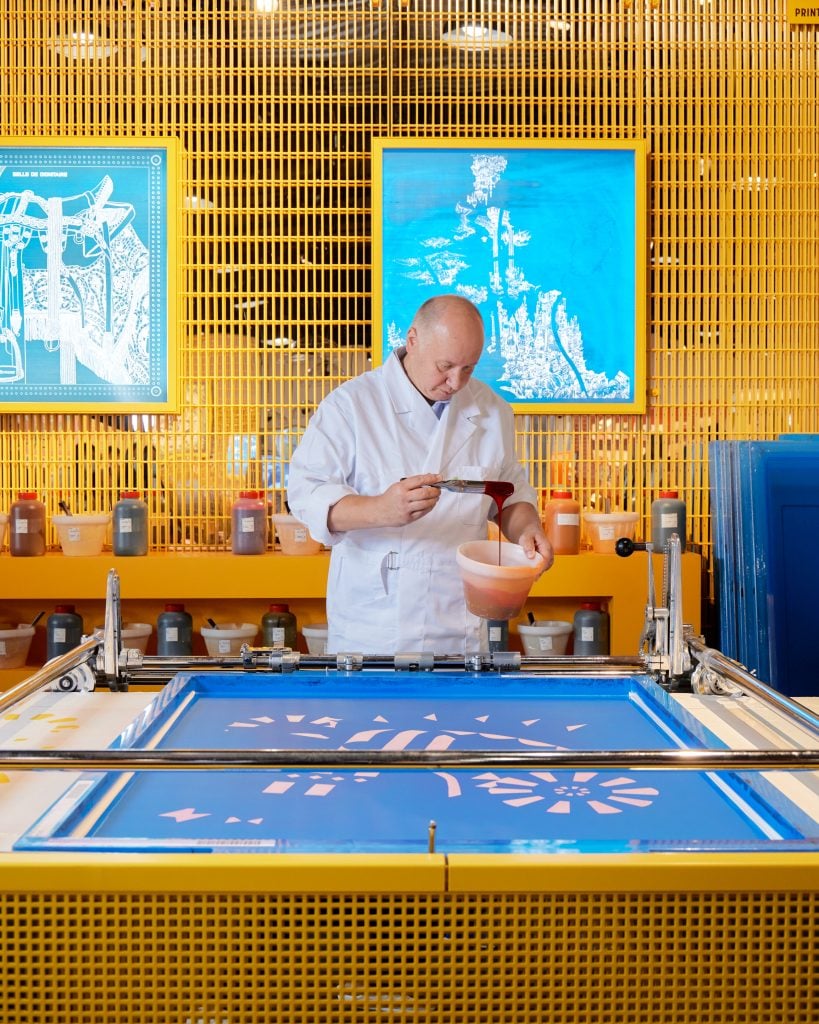
The storied French house behind the Birkin bag touches down in Detroit.

William Van Meter

All cars on the Detroit People Mover train were adorned with the colorful world of Hermès. The Paris-based luxury house had just concluded a week of activations in the metro area. It might seem a mismatched pairing, but both have roots in manufacturing and ingenuity. And the Michigan city started out as Fort Pontchartrain du Détroit, after all, in what was then New France. But, as I learned on a recent press trip, there’s a little-known, deeper connection.
A century or so ago, when Émile-Maurice Hermès (grandson of founder Thierry) toured the Ford Motor Company plant, he was taken with a fastening device used to connect cloth tops to cars. He adapted and patented the technology, and “The Bolide” was released in 1923: the world’s first purse with a zipper, still in production.
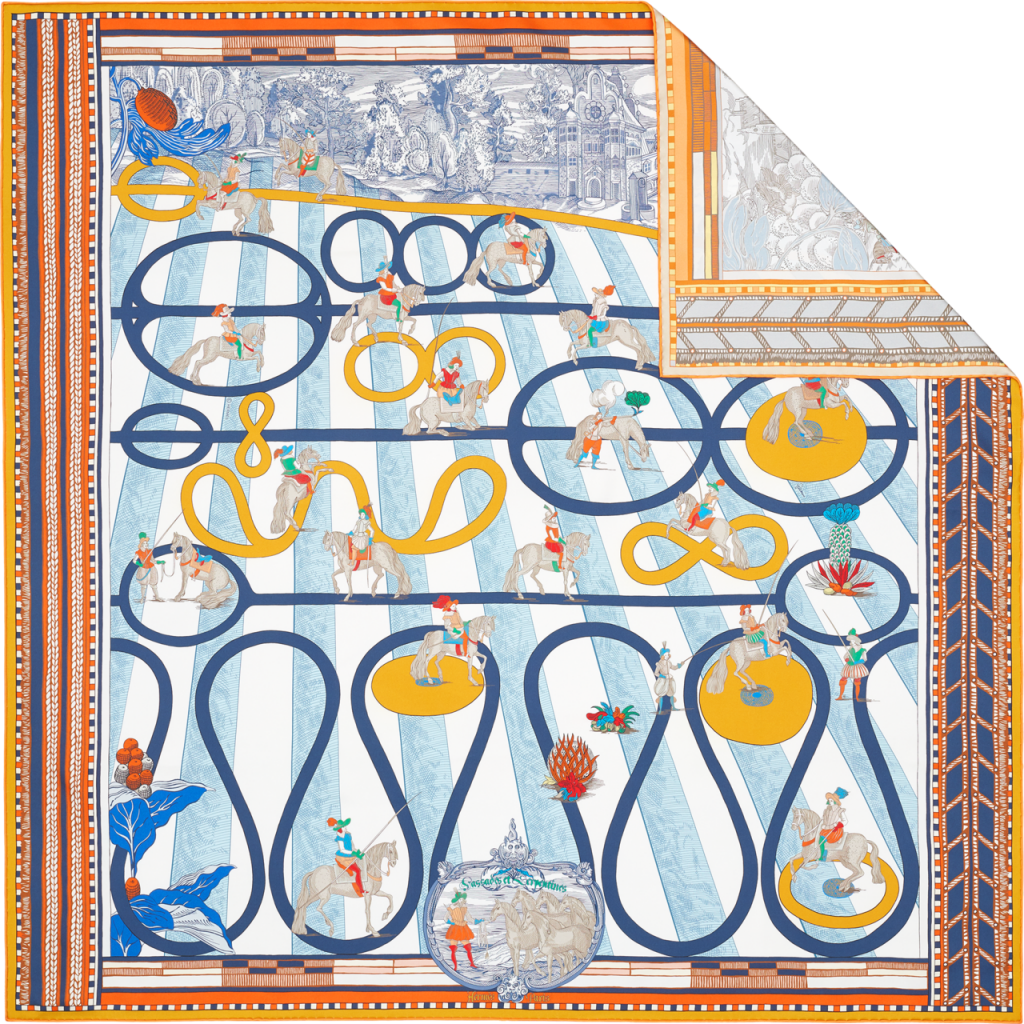
A whimsical equestrian scene is depicted on one of the famed scarves. Courtesy of Hermès.
Other convergences emerge. Hermès, a $16 billion heritage brand, remains family run, and of the 11,000 French employees, more than half—55 percent—are artisans. Meanwhile, Detroit has a burgeoning art scene and is settling into its rebirth as a creative hub. “We want to be part of the community,” explained the house’s executive vice president, Diane Mahady, during a June 10 panel at the city’s College for Creative Studies.
Indeed, the itinerary for last week’s press tour included a visit to the Detroit Achievement Academy, a free charter school to which Hermès has provided grants and art supplies. The third-graders were making kaleidoscopic butterflies out of gorgeous silk scarf remnants. When asked why they called them “bird savers,” they explained that they were to be hung in the school’s windows, to prevent birds from splatting against the glass of the new modern extension being built.
Craftsmanship and sustainability are key tenets of Hermès, but what does this mean in practice? What brand doesn’t purport to be eco-conscious? It’s increasingly harder to penetrate a company’s drumbeat of messaging and zero in on truth. Hermès implemented a “show, don’t tell” strategy with the centerpiece of the trip, “Hermès in the Making.” Admittedly, I was absolutely schooled.
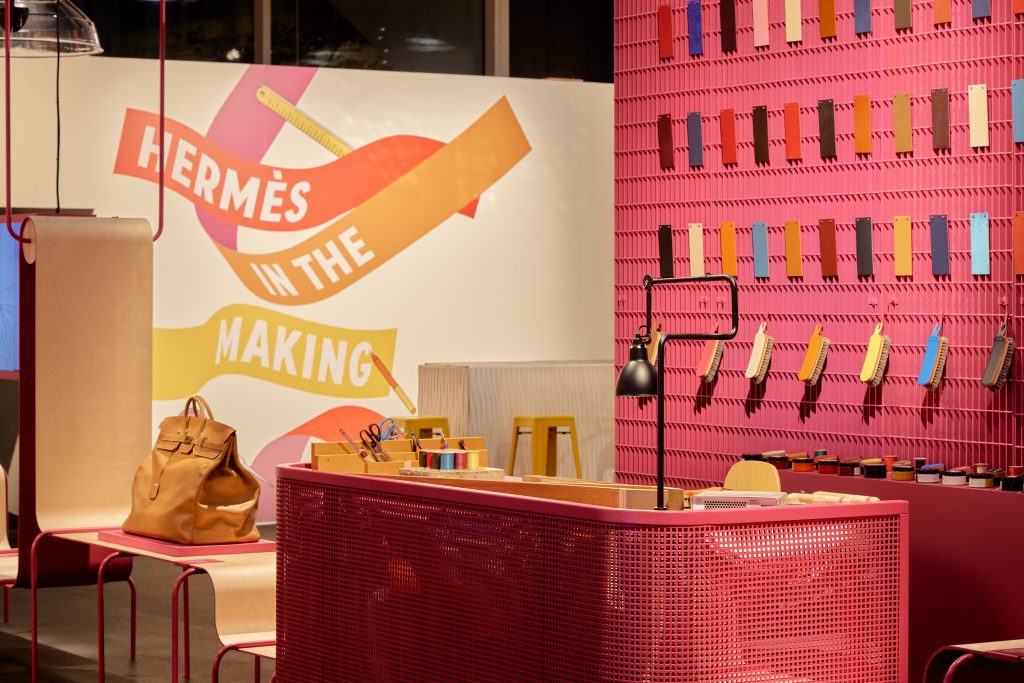
A cavalcade of color (and a Birkin bag). Photo: William Jess Laird, courtesy of Hermès.
“Hermès in the Making,” which ran in the suburb of Troy from June 10–15, is a traveling pop-up that lets viewers witness the processes of creation. This iteration was held in a large space within the high-end Somerset Collection Mall (the brand opened a store there in 2021). If spies from a rival company came to glean trade secrets, they would leave empty-handed: It wouldn’t be possible or cost-effective to replicate the handiwork on show. The techniques are painstaking, intricate, and time-consuming. They require the utmost skill and training, and many procedures are proudly, defiantly low-tech.
With eight artisans at work at any given time, the colorful atelier is like a chic, Pompidou-esque version of an immersive, kid-oriented science museum, but for adults geeked on fashion. Detroit is not the only stop: They’re like a troupe of Shakespearean actors, plying their art from community to community. Next stops are Singapore in September, Austin in October, and Kyoto in November.
The site is divided amongst the house’s métiers. At one station, an artisan was meditatively lost in her work. She glanced at a finished vase and then dabbed at her in-process one with a fine brush to match the patterns. It looked exact, but on closer inspection there were ever-so-slight, barely perceptible nuances, a human touch that made each distinctive. Other sections demonstrated the stitching of a Kelly bag, or leather glove-making.
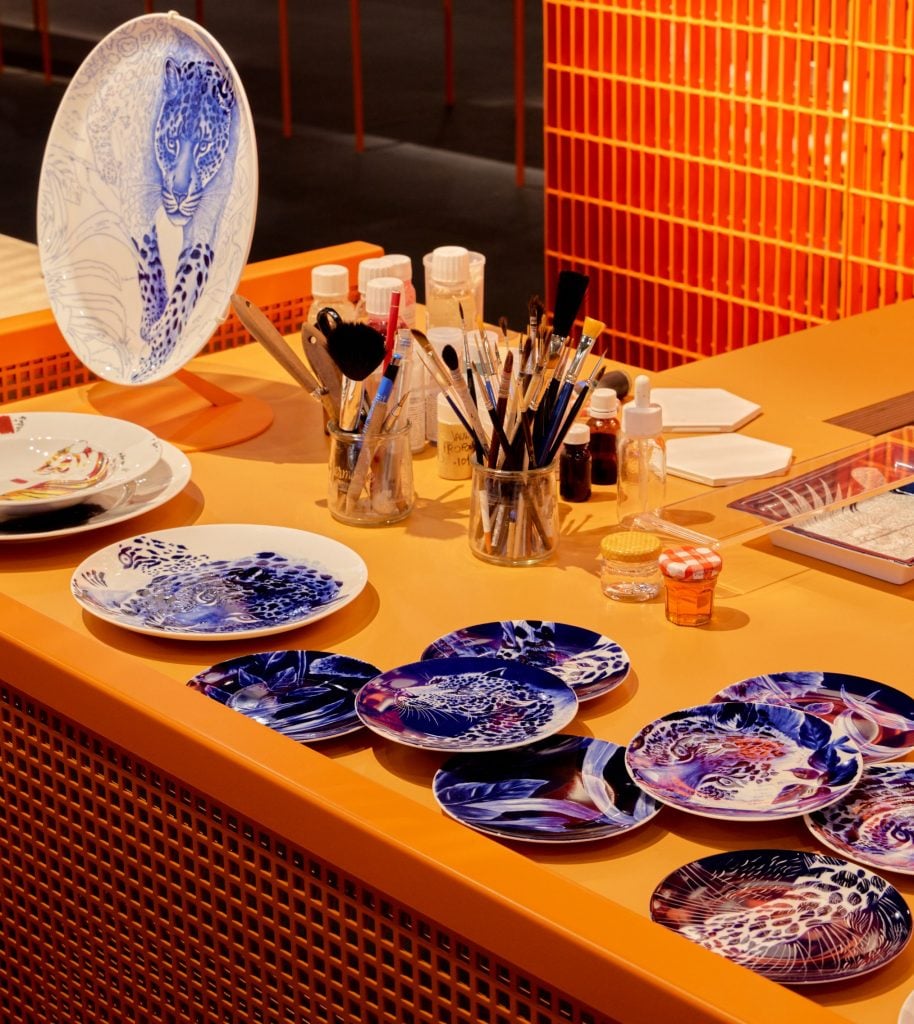
Doing the dishes: Fine porcelain in the process of being hand-painted. Photo: William Jess Laird, courtesy of Hermès.
Most relevatory, perhaps, was the spectacle of printing one of the famed scarves. The artisan laid a succession of screens atop the blank silk square and squeegeed dye over it. An entire screen would be used to apply a one-inch signature that is hardly noticeable. The screens are then removed, washed, and set in a different stack. Another screen was placed, resulting in a thin black outline. This one-man conveyor technique continued until artist Alice Shirley’s design featuring three giraffes was slowly revealed. It was impressive as well as somnambulant. I had to clock out after screen 17, just as the giraffes’ colors were being filled in. There were still many more screens leaning on the wall waiting to be applied.
The exhibit highlighted other crafts, as well as odd ephemera. A glass display dome was filled with what looked like candy but turned out to be silkworm cocoons. A meteorite fragment—a chunk of Mars that was discovered in North Africa—provides shavings used in the Arceau L’Heure de la Lune watch. The punk grandeur of the black leather Vivace saddle triggered a heretofore unknown desire of wanting to display a horse accoutrement in the home as a sculpture. Many of these products are art-adjacent, but the mini-line dubbed “petit h” really blurs the boundary between art and luxury craft, and is basically a couture take on sustainability.
Remnants from all Hermès endeavors collide and are reborn into clever, one-of-a-kind pieces by the design team, such as an absurd/genius porcelain skateboard more suited to passing appetizers than for doing kick flips. (Hopefully, a “petit h” retrospective is on the agenda.)
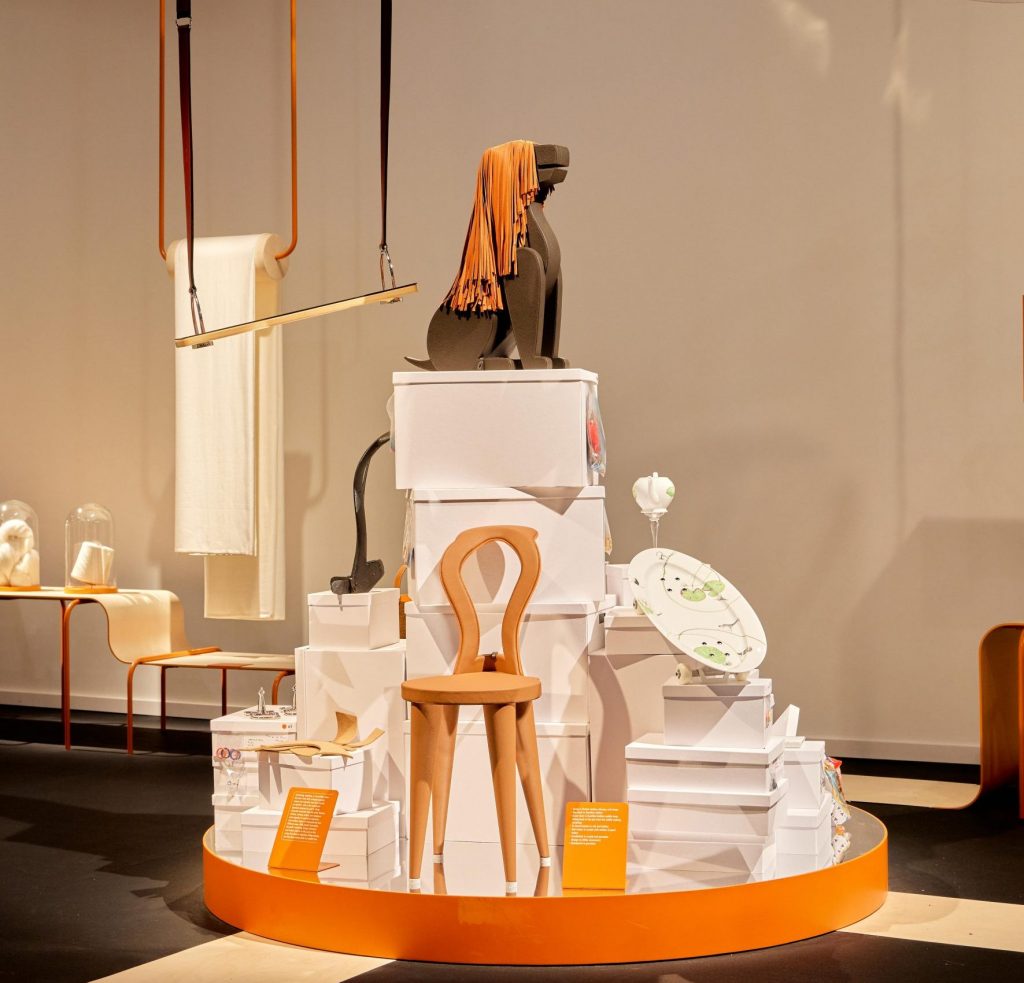
The assemblage of wondrous “petit h” one-offs, including a porcelain skateboard. Photo: William Jess Laird, courtesy of Hermès.
All in all, this intimate glimpse behind the curtain leaves the viewer with a more educated understanding of quality and the sometimes years-long waitlists for Hermès pieces. If one goal of the exhibition was to justify price, then mission accomplished. But so much more is explored, like informed consumption and thinking of every purchase as a potential heirloom. What truly stands out—and moved me—is the artistry and care of the people creating.